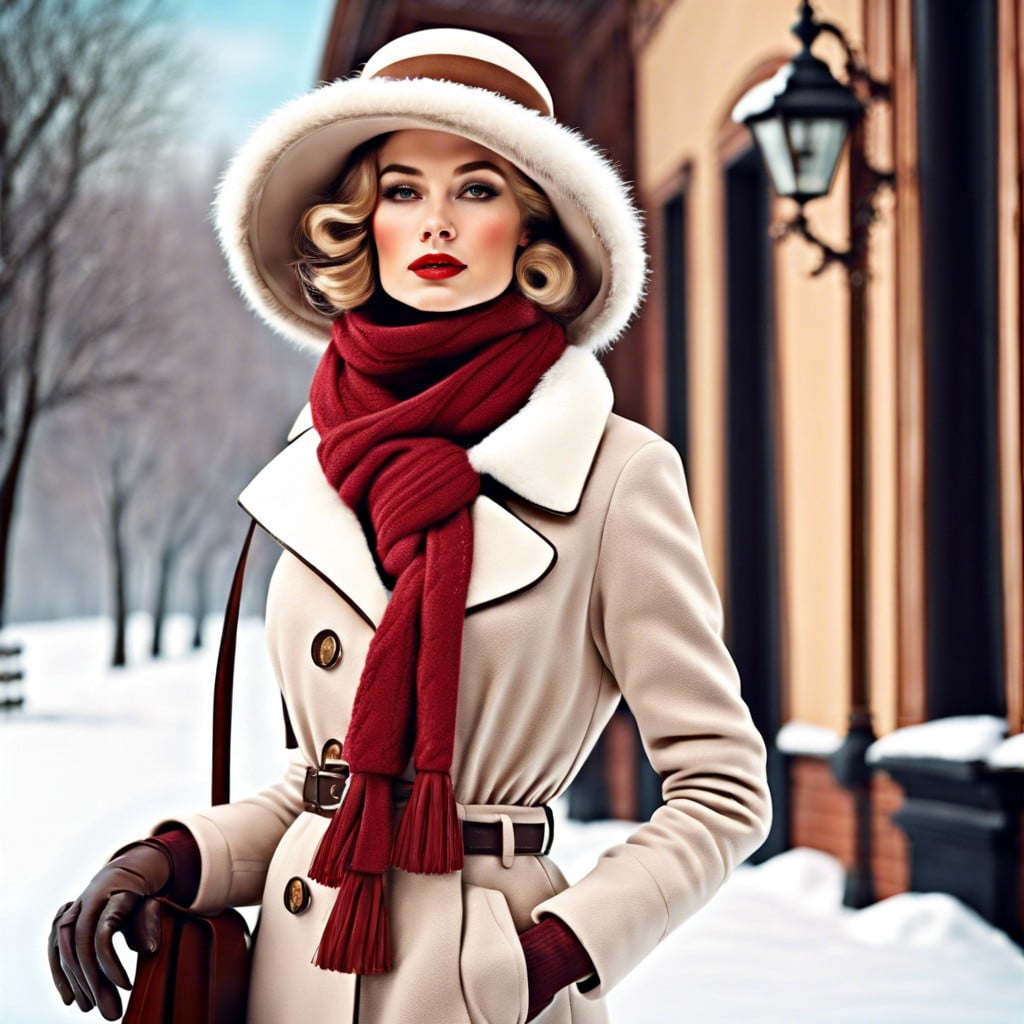Last updated on
Discover the allure of icy vintage jewelry, its history, and how to discern authentic pieces from reproductions.
Key takeaways:
- Icy Vintage refers to retro fashion pieces with luminosity and cool color palettes.
- The icy aesthetic evolved from the early 1900s to the 1980s, always symbolizing elegance and luxury.
- Icy vintage apparel includes shimmering evening gowns and sparkling jewelry, reflecting opulence.
- Icy vintage is making a comeback in modern fashion with a contemporary twist.
- Authenticating icy vintage items requires attention to labels, stitching, materials, and provenance.
Defining Icy Vintage

Coined from the sparkle and shine akin to ice, ‘Icy Vintage’ refers to retro fashion pieces that feature luminosity, often through the use of rhinestones, sequins, and glittering fabrics. This style harks back to the mid-20th century when glitz and glamour dominated evening wear and accessories. Hollywood’s Golden Age played a pivotal role, as silver screen starlets donned shimmering gowns, establishing a lasting trend. Additionally, ‘Icy’ motifs include pale, frosty color palettes like silver, pale blue, and white, emphasizing a cool yet sophisticated aesthetic.
These garments and accessories often carry the narrative of luxury and opulence from bygone eras. Today, they are prized for their craftsmanship and rarity. For enthusiasts, incorporating these items into contemporary wardrobes brings a touch of retro flair and nostalgia. They serve as statement pieces that catch the eye and turn heads, just as they did when first worn decades ago.
Historical Evolution of the Icy Aesthetic

The term “icy” connotes coolness, luxury, and brilliance. In the early 20th century, fashion began to reflect these qualities through the use of shimmering fabrics and embellishments, mirroring society’s fascination with wealth and glamor.
During the 1920s, the Art Deco movement championed geometric patterns and metallic accents, laying groundwork for what would later be termed as the icy aesthetic. Silver, gold, and crystal were key elements in fashion articles, denoting sophistication and opulence.
Post-World War II, the 1950s saw a spike in consumerism. Hollywood’s silver screen stars donned glittering gowns and glitzy accessories, making the icy look synonymous with high society.
By the 1980s, the aesthetic had evolved. Sparkling embellishments and glossy satins were now sported in day-to-day attire, not just evening wear, signifying wealth in the midst of the decade’s materialism.
These historical shifts reflect the icy vintage style’s adaptability, always remaining a symbol of elegance and luxury throughout the decades.
Iconic Icy Vintage Apparel
Ice blue hues and crystal embellishments characterized a significant trend in vintage fashion, often synonymous with old Hollywood glamour. Reflective of the opulence of bygone eras, these pieces would shimmer under the light, conveying elegance and sophistication.
During the 1950s and 1960s, the icy look was particularly revered. Evening gowns made from silks and satins would often feature this frosty palette, with designers such as Dior and Balmain setting trends. Jewelry followed suit, where diamonds and rhinestones were favorites, creating the illusion of wearing pieces carved from ice.
This trend saw a resurgence in colder months, where the sparkle of holiday attire drew inspiration from icy vintage aesthetics. The idiom “to break the ice” comes to life as these pieces often served as conversation starters during social gatherings and festive parties.
When assessing such apparel, one should pay attention to the quality of fabric and construction. True vintage icy garments often boast superior craftsmanship, with close-fitting designs that moved like liquid and caught the light with every turn.
To this day, icy vintage outerwear like white mink stoles or cashmere coats with fur collars remain sought-after for their timeless appeal that transcends fashion’s seasonal nature. These artifacts of past glamour continue to find their place in contemporary wardrobes, melding history with modernity.
The Resurgence of Icy Vintage in Modern Fashion
Retro styles are making a comeback but with a twist, showcasing chiseled elegance from eras gone by. Fashion’s cyclical nature has ushered in an appreciation for clean lines and sharp tailoring reminiscent of the 1960s’ mod scene. Ice-blue sequined dresses and frost-toned suits scintillate on runways and city streets, striking a balance between nostalgic charm and contemporary sleekness.
Despite the obsession with all things digital, today’s designers are reaching back, not for imitation, but inspiration. They’re reinvigorating the past’s cool tones and minimalist designs for today’s eco-conscious and style-savvy consumers. Thrift stores and vintage boutiques are treasure troves, and there’s a palpable thrill in unearthing a sterling silver swing coat or a pair of white leather go-go boots that scream sophistication.
The allure of icy vintage stretches beyond textiles into accessories. Think Audrey Hepburn’s timeless sunglasses, now reimagined with modern UV protection, or the simplicity of a silver chain belt reworked with contemporary clasps. These accessories pair flawlessly with current minimalist trends, offering that ‘cherry on top’ to an already polished look.
This newfound embrace of icy vintage has also spilled over into pop culture, with television shows and films set in mid-twentieth-century eras influencing public fashion choices. As viewers see their favorite characters don chic, retro ensembles, they’re inspired to blend that aesthetic into their own wardrobe, marrying the past with the present in a dignified dance of style.
Strategies for Authenticating Icy Vintage Items
To determine the authenticity of vintage items, a keen eye for detail is key.
First, inspect the label and stitching. Genuine vintage pieces often have labels that show signs of aging, such as faded colors or fraying edges. Moreover, older clothing may feature irregular, densely sown stitches, a tell-tale sign of the pre-mass production era.
Second, scrutinize the materials. Synthetic fabrics didn’t become common until the mid-20th century, so a so-called vintage item boasting a composition tag of modern blends might raise red flags.
Third, research the style. Familiarize yourself with the fashion trends of the era in question. Items purporting to be from the 1920s, sporting zippers or certain types of seams, could be modern replicas, as zippers weren’t widely used in women’s clothing until the 1930s.
Lastly, seek out provenance where possible. Authentic items might come with a backstory or documentation, providing a trail back to their icy vintage origins. Use these strategies and watch as the frosty fog of uncertainty clears, revealing the true nature of your vintage find.




